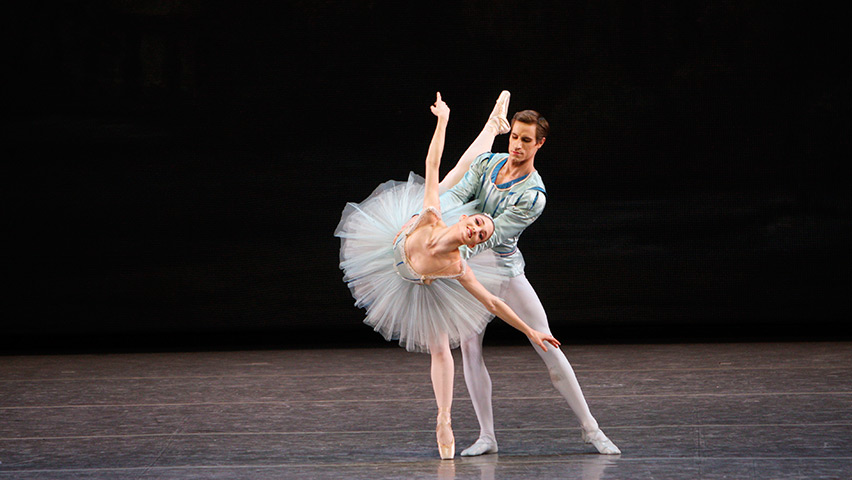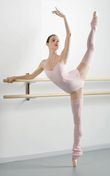Given how familiar Balanchine was with Petipa’s choreography, I think he purposefully plays with gender and rank in his adaptation too. In the original Raymonda the ballerina has six variations; in Balanchine’s version there are six women who perform variations. (Five of these women get one solo apiece while the principal ballerina gets two and a pas de deux.) What is interesting is that
Most surprising of all is that Balanchine gives the biggest musical crescendo in his abridged Glazunov score to two female soloists as they lead the rest of the corps in a brisk coda. In the Petipa, this coda music is reserved to demonstrate only Raymonda’s prowess. As Rosemary Dunleavy explained to us, Balanchine made this ballet to show off his troupe’s impeccable training; perhaps he was showing off the depth of talent in the ranks as well. But maybe he was also demonstrating one of his biggest breaks with his Russian heritage: Balanchine wanted everyone in his ballets to be dancing all of the time, at a very high level. He expected every dancer on the stage to perform rigorously, and there are no dancers entailed as veritable scenery in his works. Even the choreography he gives to children is complex and physically difficult. In his Raymonda, there is no sitting on chairs and watching one person sweat as Frederic Franklin had feared.
Raymonda Variations is certainly one of the more challenging of Balanchine’s creations, but it is also exhilarating to perform. On Friday night my cast had a lot of fun. We were led by the intrepid Ashley Bouder, but we were all sweaty and spent when the curtain went down. And as per usual, to rev up for the show we played Beyoncé’s “Flawless” in the dressing room beforehand and then we whispered her refrain “bow down bitches” in the wings to each other before the coda. A ballet with roots in tsarist Russia that also elicits Beyoncé sing-alongs? Pretty damn great.


 RSS Feed
RSS Feed